Under no circumstances will this ever truly represent all the men and women who have served in the military from this area, in wartime and peacetime. But we do hope to present a bit of a cross-section, a condensed representation of those men and women. Much of the material here comes from the stories and the pictures provided on the Facebook page "Military Memories East Liverpool & Tri-state area. Those who served, their friends, families & admirers", by veterans or their family members and friends.
https://www.facebook.com/groups/394005590708753/
Columbiana County, ever loyal to the country of which it is a part, has furnished soldiers for it’s five major wars, that of 1812 with England; the 1846-’48 engagement with Mexico; the terrific conflict between the States from 1861 to 1865; the 100-day decisive clash with Spain in 1898 and the unprecedented world fight of the nations in 1917-’18. It also had volunteers in practically all the minor scrimmages from Gen.-Maj. Anthony Wayne’s campaign against the Indians just after its settlement to the punitive expedition of General Pershing into Mexican territory for the bandit, General Villa. SOURCE: Chapter XXV - In the Wars of the Nation History of Columbiana County, Ohio Vol. I ~ Harold B. Barth 1926
AMERICAN REVOLUTION
Many of the early residents had fought under George Washington and his generals in the Revolutionary War that gave the United States its independence. As early as 1806 all males in Columbiana County over 18 years of age were subject to military duty. The “First Regiment,” Second Brigade, Fourth Division of Ohio soldiery comprised the then County Contingent. It was made up of 828 persons. The first battalion was commanded by Major Lewis Kinney and the second by Major Taggart. Brig.-Gen. Beall, of near New Lisbon, had charge of the brigade and Jam. Gen. Wadsworth of Canfield commanded the division. SOURCE: Chapter XXV - In the Wars of the Nation History of Columbiana County, Ohio Vol. I ~ Harold B. Barth 1926
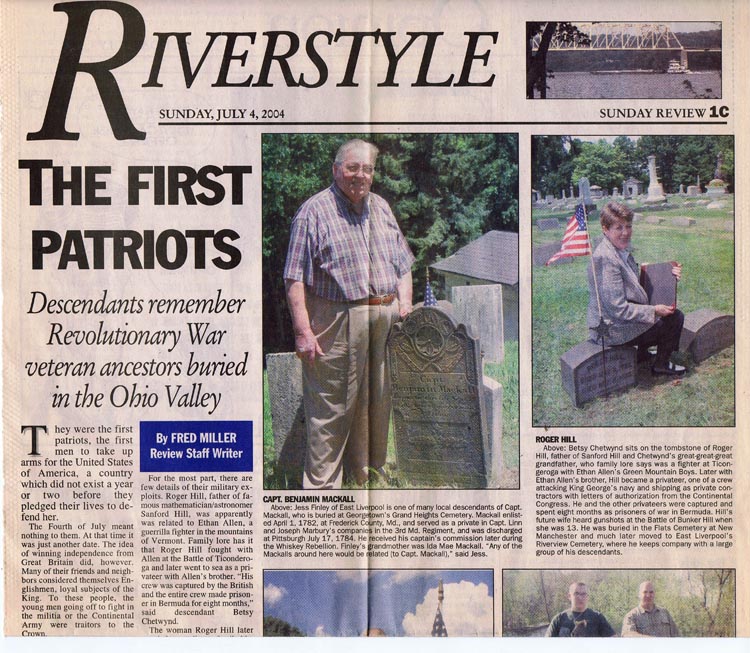

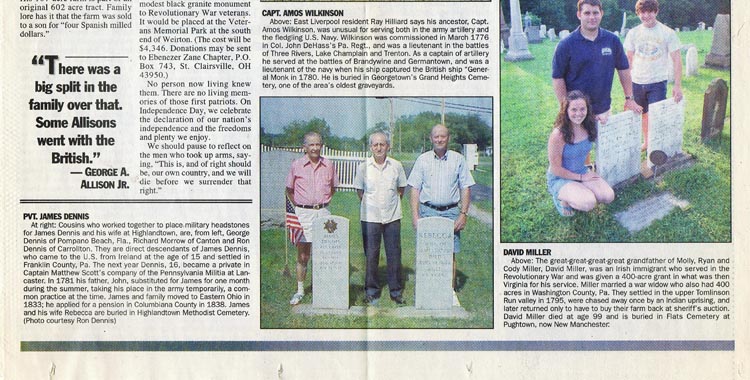
One point of focus here is Lt James Allison
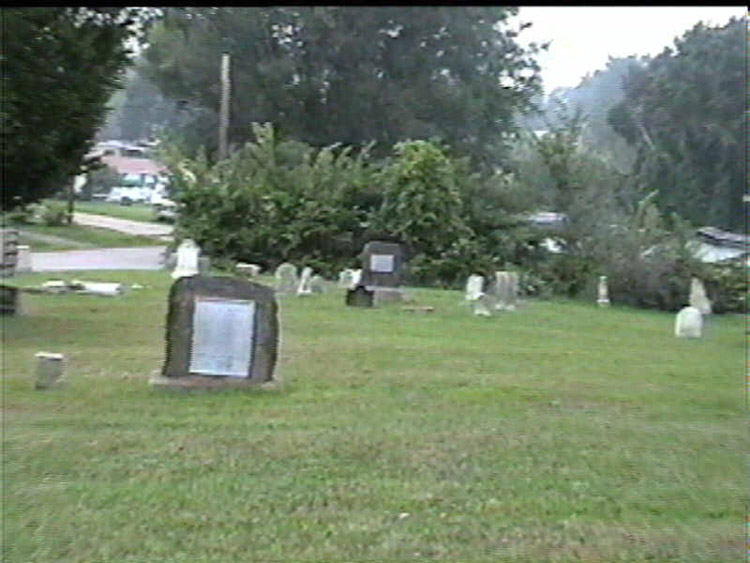
Center of the picture, the tombstone all the way at the back. That tombstone has the following plaque on it:

The Plaque located on a tombstone in Flats Cemetery in New Manchester W Va, up above Chester W. Va. In the 1950s there were close to 100 Allison surnames in the East Liverpool, Wellsville, Chester, Newell, Midland area phone book. Many of those, perhaps most of those can from this man and his descendants and eventually lived in East Liverpool and Chester. James Allison was from Maryland, he was an officer in the American Revolution and was a POW of the British. After the American Revolution he and his family moved from Maryland to the area of Virginia that would in time become Pughtown (new Manchester), Hancock County, W.Va. There are probably a good many other tombstones in the Tri-State area of men who fought in the American Revolution but this just happens to be one who know of and have photographed in the past. We hope that others might find and photograph tombstones of men who fought in that war in this area and allow us to post them as well.
Another Flats Cemetery Resident
Joachim Wycoff was born in Somerset County, New Jersey on November 18, 1749. He was living in Whitehouse, Hunterdon, NJ in 1776 when New York City was captured by the British. The New Jersey Assembly then passed an act resulting in the formation of 25 militia companies. He was drafted into a company commanded by a Captain Stillwell. This might've been the 4th Regiment of Hunterdon County, NJ. They were to protect Elizabeth Town which was then the capital of NJ. His first draft was for a term of service for 6 months of which he was on duty one month and at home one month. When the British arrive at Brunswick, NJ, troops were removed from Elizabeth Town to a place called Tunison's Tavern. This was located on the Raritan River 4-5 miles below a fork. His second draft involved the years from 1777-1779. this time it was one month on and two months off. In the spring of 1780, he moved from Hunterdon County to Somerset County. From here was his 3rd and final draft. He served 3 months from 1780-1781 going away from home only a few days at a time. His total time of service was 18 months. For payment for time served, he was given a land warrant. On July 1, 1802 he was given 294 acres of land in Brooke County, VA (now Hancock, WV). This was signed by James Monroe, governor of Virginia and later 5th president of the USA. Most of this information came from his 1832 pension application records at the National Archives. He had no documentary evidence of his service and had to rely on a witness who served with him and who was also living in Brooke (later Hancock) County. This person's name was Thomas Peterson. He was granted $60 a month. He died on May 18, 1841 and is buried at Flats Cemetery, New Manchester, WV. Courtesy of Diana Haney
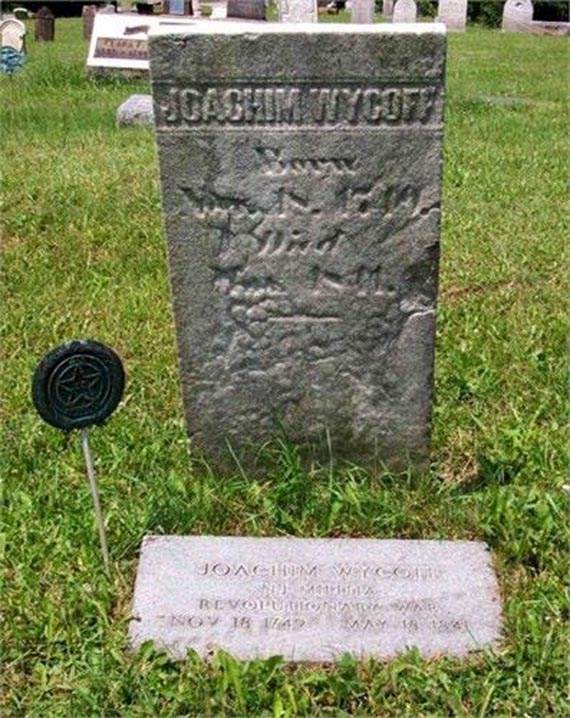
Courtesy of Diana Haney
Some additional Revolutionary War Graves found in the Hanoverton Cemetery in Columbiana County.
Courtesy Jack Lanam Slides CC- 1029
Courtesy Jack Lanam Slides CC- 1030
Someone has cared for this man and has cared for this grave at some time in recent years. Courtesy Jack Lanam Slides CC- 1031
Someone has cared for this man and has cared for this grave at some time in recent years. Courtesy Jack Lanam Slides CC- 1032
Courtesy Jack Lanam Slides CC- 1033
The Silent Revolution
http://coolthingsaroundelo.blogspot.com/2013/06/the-silent-revolution.html
Courtesy of Jeff Langdon
WAR OF 1812
Capt. Thomas Rowland raised a company of men as soon as the War of 1812 was declared on June 18 of that year. They marched to the river Raisin, 30 miles from Detroit, and refused to surrender following the capture of General Hull and his men. They finally returned home. Other companies were assembled. Capts. William Foulkes, John Ramsey, Israel Warner and David Harbaugh commanded them. In charge of drafted contingents were commanded. Jacob Gilbert, Joseph Zimmerman, William Blackburn and Martin Silter, with Col. Hindman in charge of the regiment, assisted by Majors Peter Mussor and Jacob Frederick. Yellow Creek Township furnished a number of men for these companies as well as for the Mexican War. SOURCE: Chapter XXV - In the Wars of the Nation History of Columbiana County, Ohio Vol. I ~ Harold B. Barth 1926
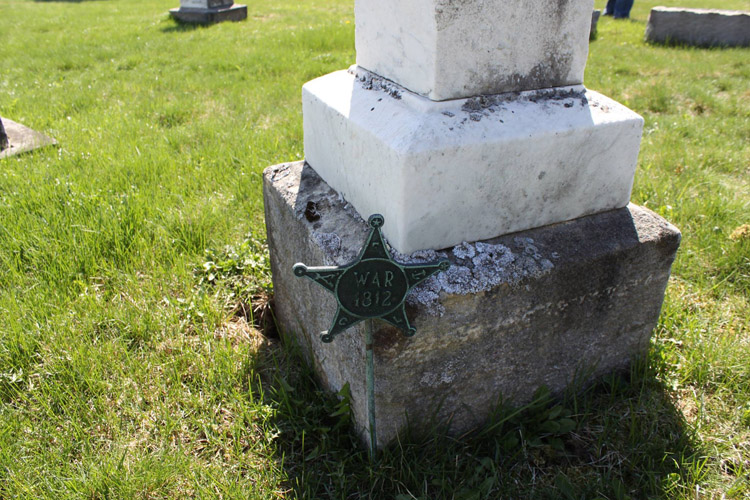
New Lebenon cemetery. As you can see hardly any of the names remain on the stones. Courtesy of Jeff Langdon
MEXICAN WAR
The “Wellsville Light Artillery,” functioned as early as 1844 in Wellsville and was commanded by Capt. Henry Cope. Judge J. A. Reddle commanded a calvary company from Wellsville. It was attached to the State Militia. SOURCE: Chapter XXV - In the Wars of the Nation History of Columbiana County, Ohio Vol. I ~ Harold B. Barth 1926
In the Mexican War soldiers from East Liverpool and other sections of the county were numbered with the armies of Generals Winfield S. Scott and Zachary Taylor. SOURCE: Chapter XXV - In the Wars of the Nation History of Columbiana County, Ohio Vol. I ~ Harold B. Barth 1926
CIVIL WAR
In 1858 the “Wellsville Guards” was organized by Capt. Henry Cope. It became a part of Company K, Third Regiment, Ohio Volunteer Infantry in 1861 with A. H. Battin as first, James T. Smith, second and J. H. Hunter, third lieutenants. Many from East Liverpool and Salineville were also in this company which was mustered in for three months in Camp Jackson, April 27, 1861. They later re-enlisted for three years. They began service under Gen. George McClellan at Grafton, W. Va.
Companies during the later part of the war became attached to practically all Union armies and saw service in almost every zone of the conflict.
Companies during the later part of the war became attached to practically all Union armies and saw service in almost every zone of the conflict.
At least one battle of that great struggle was fought in Columbiana County, that at Salineville on July 26, 1863, one month lacking a day since Gen. John Morgan started on his spectacular and destroying dash from Sparta, Tenn., with 2000 cavalrymen and four cannons which he hoped would enable him to reach Southwestern Virginia. At Salineville the remnant of the rebel officer’s command was attacked by Major Way of the Ninth Michigan Cavalry who routed him after a severe fight in which the enemy lost 30 men fatally wounded, 50 slightly injured and 200 captured as prisoners.
About six hours later, about 2 o’clock in the afternoon of that day the entire remaining force of General Morgan was captured on the David Crubaugh farm near West Point by Major George W. Rue of the Ninth Kentucky Cavalry. He took 336 prisoners, 400 horses and arms. About 300 of the original command that started on the ill-fated expedition crossed the Ohio into Virginia at Buffington Island. General Morgan and some of his officers were taken to Wellsville that night and later imprisoned at the Ohio penitentiary at Columbus. He and six of his men escaped from the institution on the night of Nov. 26, 1863. The following year he was killed in Eastern Tennessee after returning to the Southern Service.
On the spot where General Morgan surrendered was later erected a monument by Will L. Thompson of East Liverpool. It consists of a huge stone that rests on a square marker on which has been attached a brass plate with the following inscription: “This stone marks the spot where the Confederate raider, General John H. Morgan, surrendered his command to Major George W. Rue, July 26, 1863, and is the farthest point north ever reached by any body of Confederate troops during the Civil War.” “Erected by Will L. Thompson, East Liverpool, Ohio, 1909.”
The granite stone was completed on Thursday, August 11, 1910. There on that day it was duly unveiled by representatives of General Lyon Post, G. A. R., the East Liverpool Historical Society and the press of the county. An acre of ground about the monument was also purchased by Mr. Thompson for the public’s use as a park. The formal transfer of the gift was made by Attorney William H. Vodrey for Mr. Thompson’s estate and it was accepted in behalf of the war veterans and the state of Ohio by Justice Daniel McLane.
On Sept. 21, 1910 another expedition was made to the spot by many East Liverpool folk who escorted Major and Mrs. George W. Rue, who was found to be residing in Hamilton, Ohio, to the spot on which he played so notable a part nearly half a century before.
SOURCE: Chapter XXV - In the Wars of the Nation History of Columbiana County, Ohio Vol. I ~ Harold B. Barth 1926
MUSIC OF THE CIVIL WAR ERA
https://www.youtube.com/watch?v=PMRYTaILXA4&list=PLE9582E040AC13961
https://www.youtube.com/watch?v=4tIsXLyZcWI
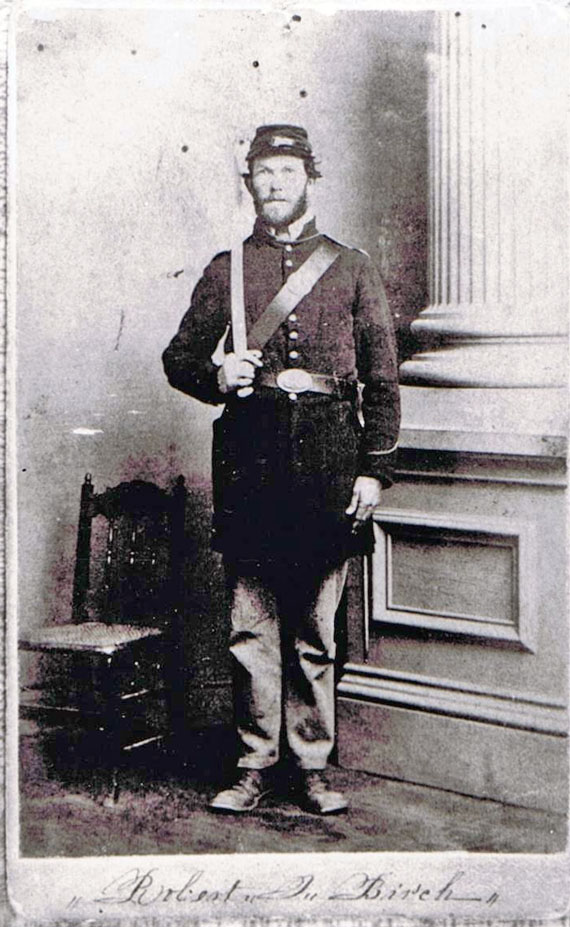
Robert Birch, Co. D. 140th Pennsylvania, Wounded at Gettysburg. Later moved to Salineville. Ohio. His grandson started the Birch Supply Co. in ELO.
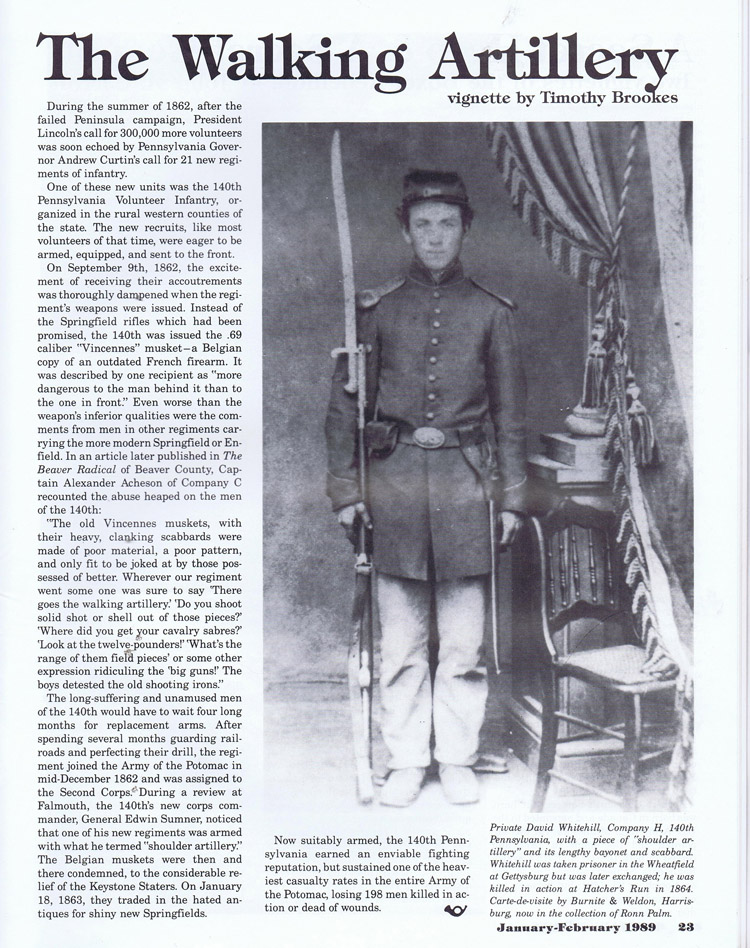
East Liverpool's Volunteer Military Units
http://www.eastliverpoolhistoricalsociety.org/milvols.htm
The Sunshine Soldiers: The Ohio National Guard Come to the Rescue
http://www.eastliverpoolhistoricalsociety.org/Sunsold.htm
Jacob Shenkel: Soldier and Photographers Friend
http://www.eastliverpoolhistoricalsociety.org/Jacshen.htm
East Liverpool Civil War Photograph Album
http://www.eastliverpoolhistoricalsociety.org/civwaralb.htm
The Liverpool Tigers Go To War
http://www.eastliverpoolhistoricalsociety.org/livtiger.htm
General James Reilly
http://www.eastliverpoolhistoricalsociety.org/jamesreil.htm
MEDAL OF HONOR, WILLIAM H. SURLES. EAST LIVERPOOL, OHIO
Surls Brothers
http://www.eastliverpoolhistoricalsociety.org/Surls.htm
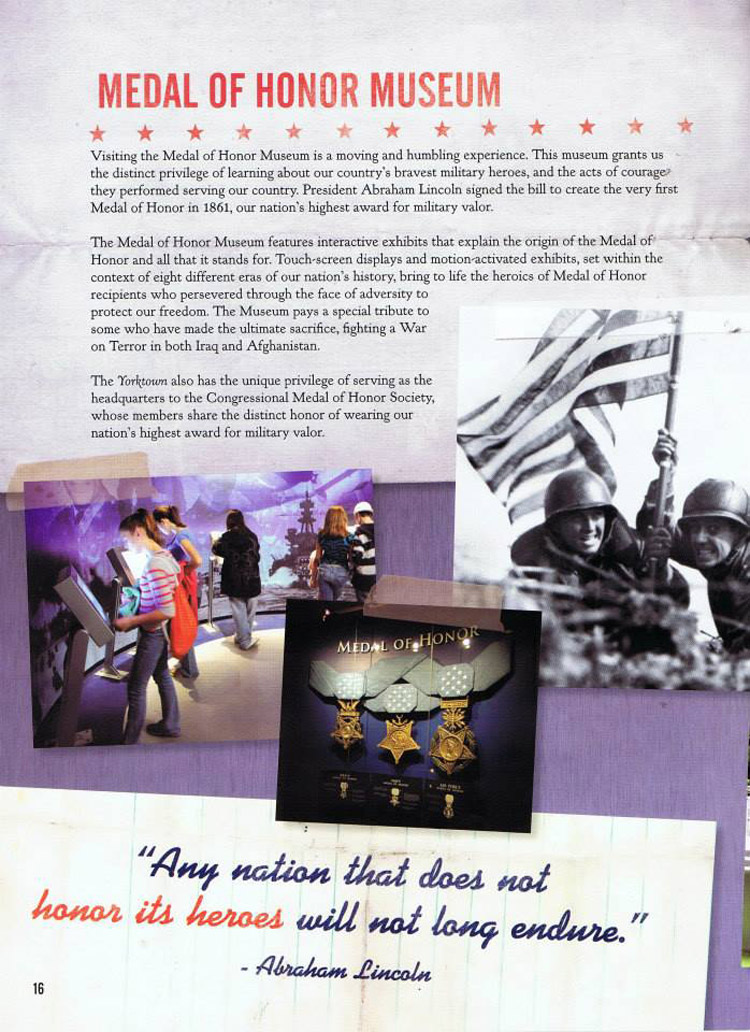
This is located in Hanger Bay 2 on board the floating Museum USS YORKTOWN CVS -10, a WWII -Vietnam Essex Class Aircraft Carrier at Patriots Point, Mount Pleasant (Charleston) S.C.

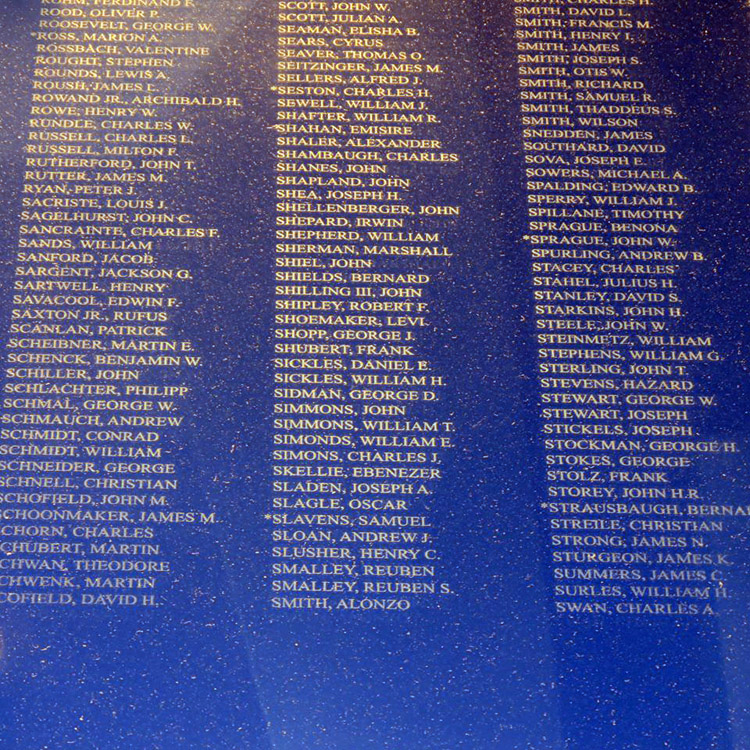
Notice his name at the bottom far right.
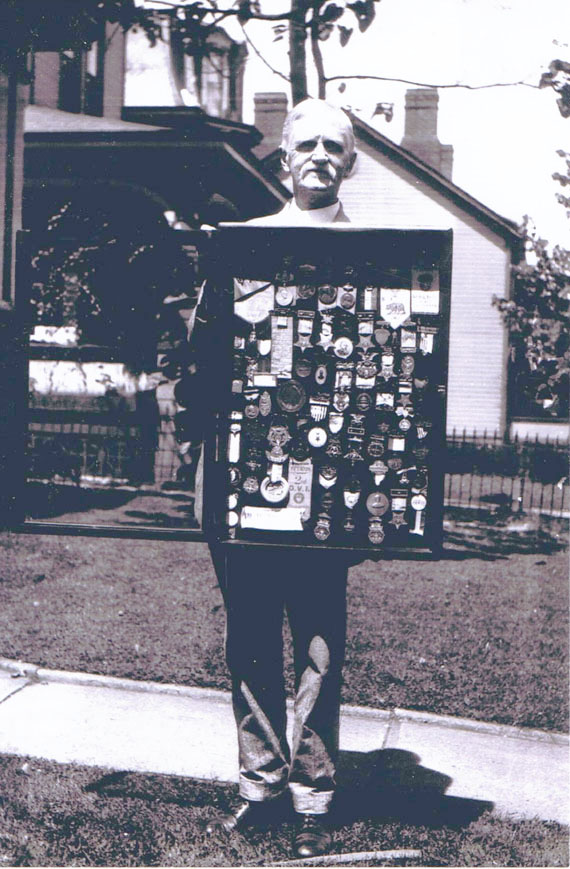
Medal of Honor Winner William H. Surles showing his GAR reunion badges outside of his home on Seventh Street.
ELO GAR (Grand Old Army - Civil War Vets.)
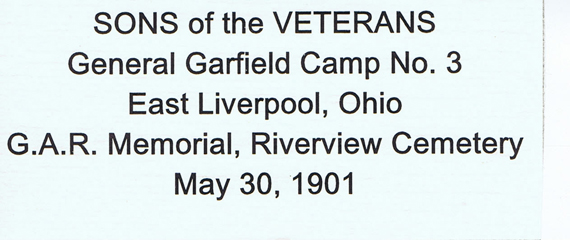
Sone of Gar 1901
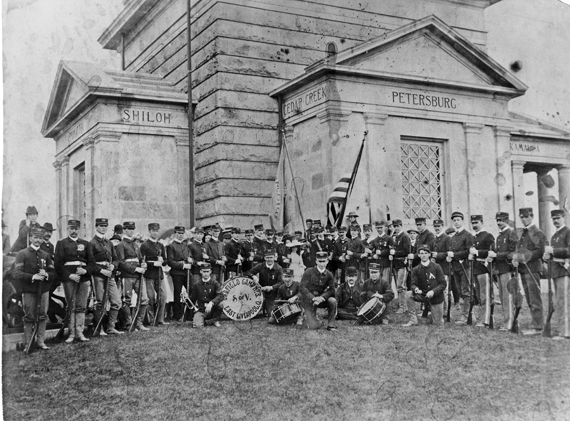
Sons of Vet Gar, 1901

From the left: John N Taylor, Jacob Shenkel, Noah H. Fredrick, Basil C, Simms, Hezekidh Simms.
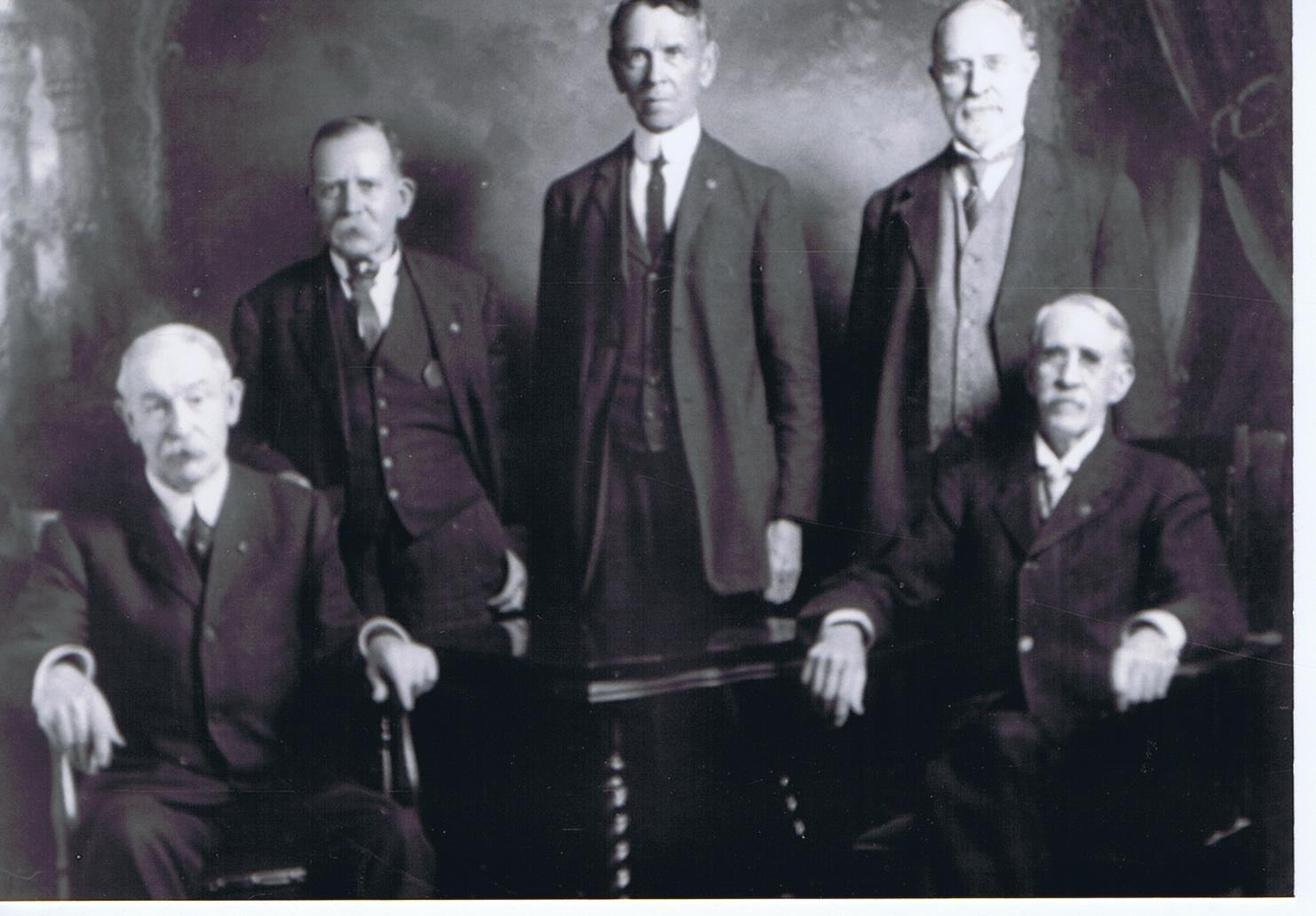
Same men, same positions in the picture, Fall of 1914. L to R: John N. Taylor, Jacob Shenkel, Noah A. Fredrick, Dasil C, Simms, Hezekidh Simms.
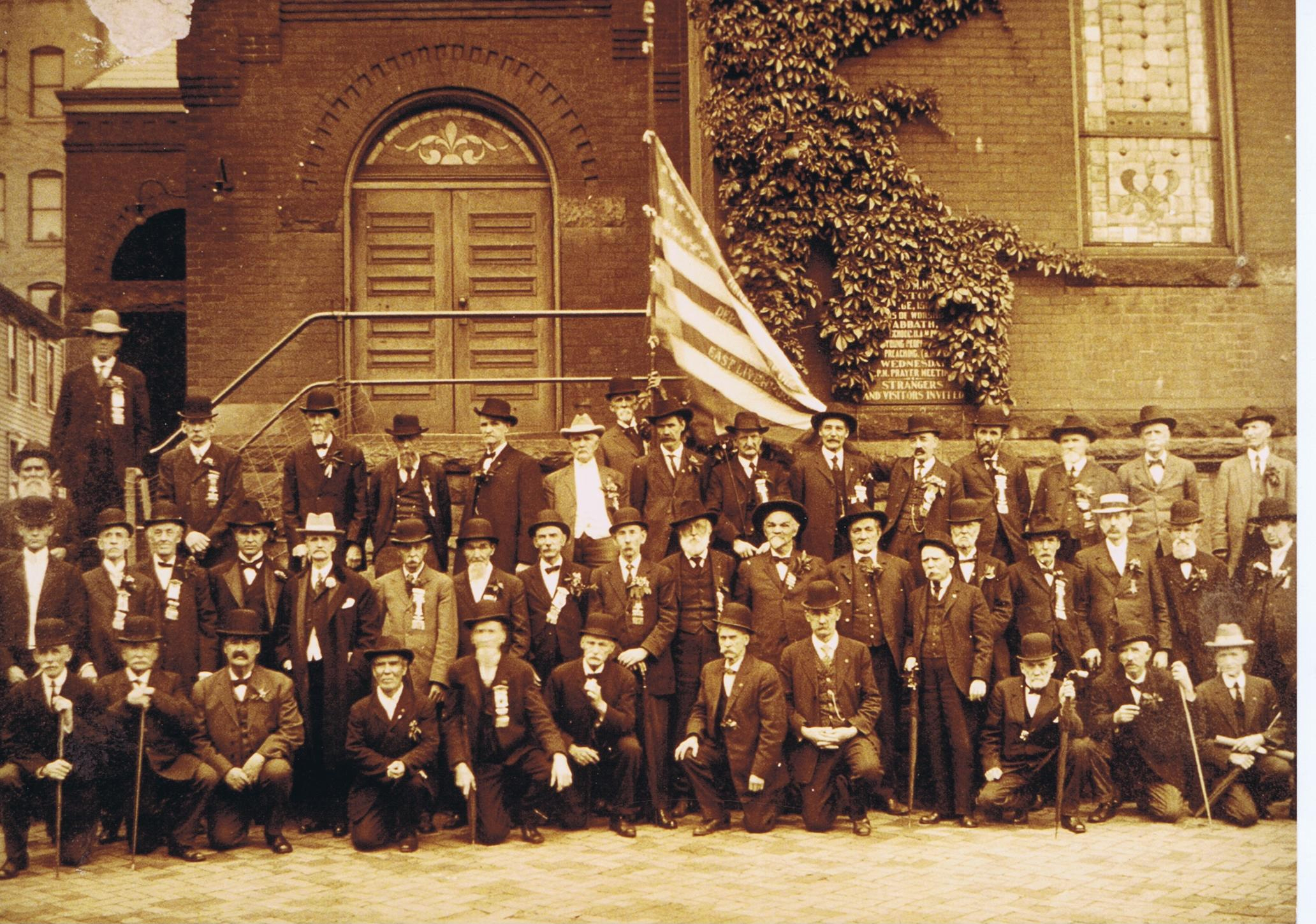
Memorial Day May 30, 1910
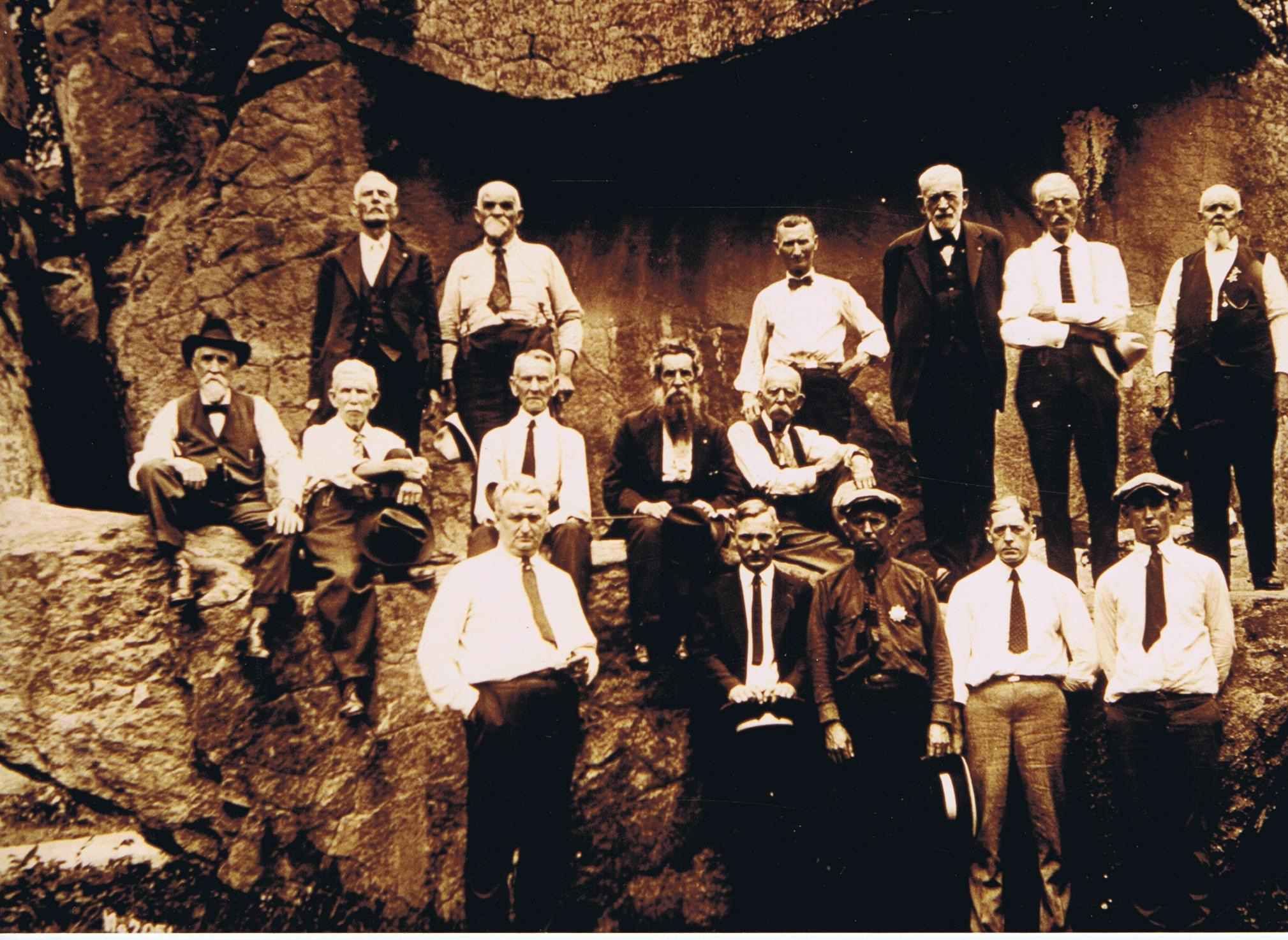
Devils Den Gettysburg Pa 1922
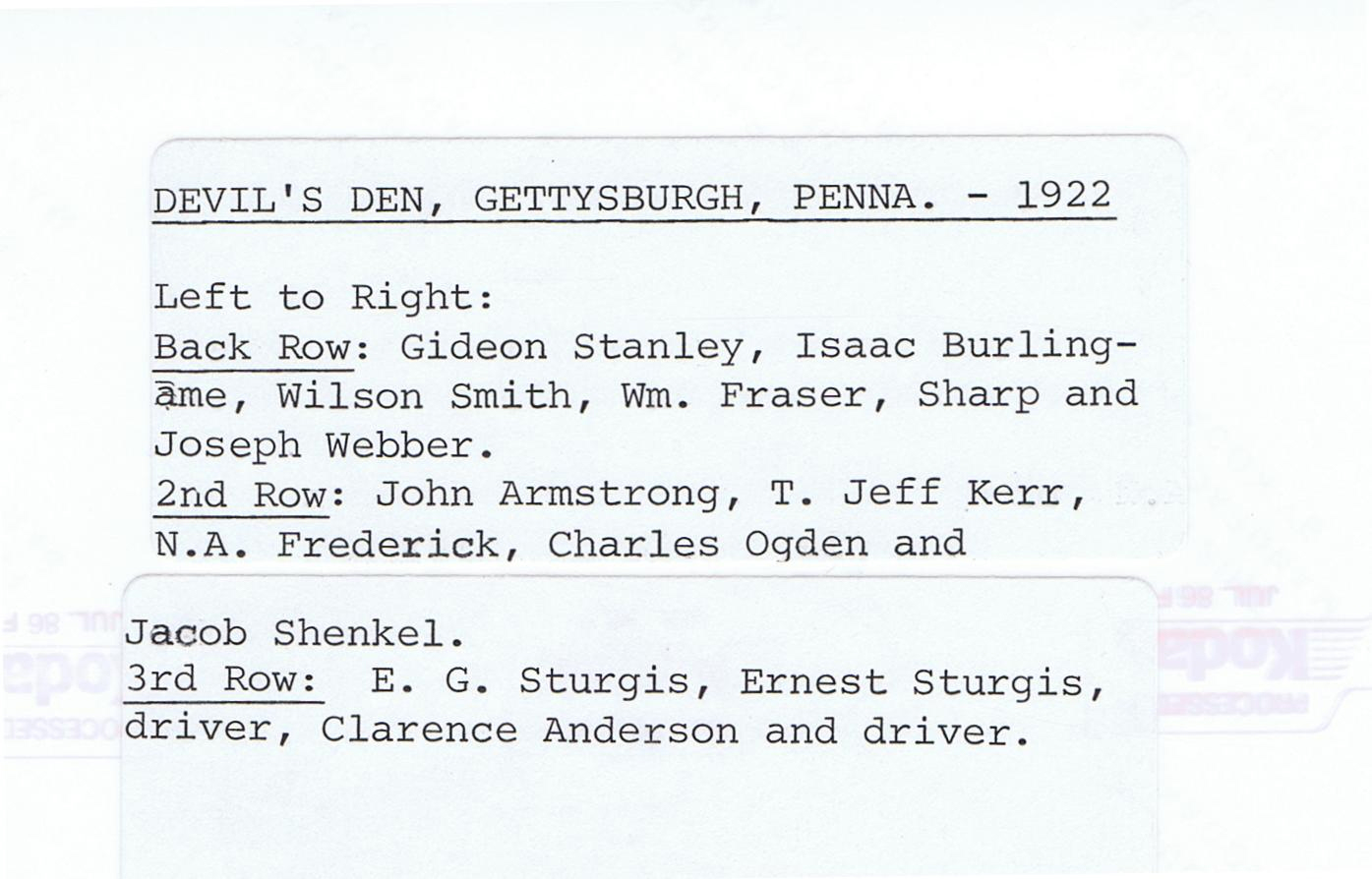
Names on the Gettysburg picture.
CONTINUE TOOur Military Heritage 2
This site is the property of the East Liverpool Historical Society.
Regular linking, i.e. providing the URL of the East Liverpool Historical Society web site for viewers to click on and be taken to the East Liverpool Historical Society entry portal or to any specific article on the website is legally permitted.
Hyperlinking, or as it is also called framing, without permission is not permitted.
Legally speaking framing is still in a murky area of the law though there have been court cases in which framing has been seen as violation of copyright law. Many cases that were taken to court ended up settling out-of-court with the one doing the framing agreeing to cease framing and to just use a regular link to the other site.
The East Liverpool Historical Society pays fees to keep their site online. A person framing the Society site is effectively presenting the entire East Liverpool Historical Society web site as his own site and doing it at no cost to himself, i.e. stealing the site.
The East Liverpool Historical Society reserves the right to charge such an individual a fee for the use of the Society’s material.